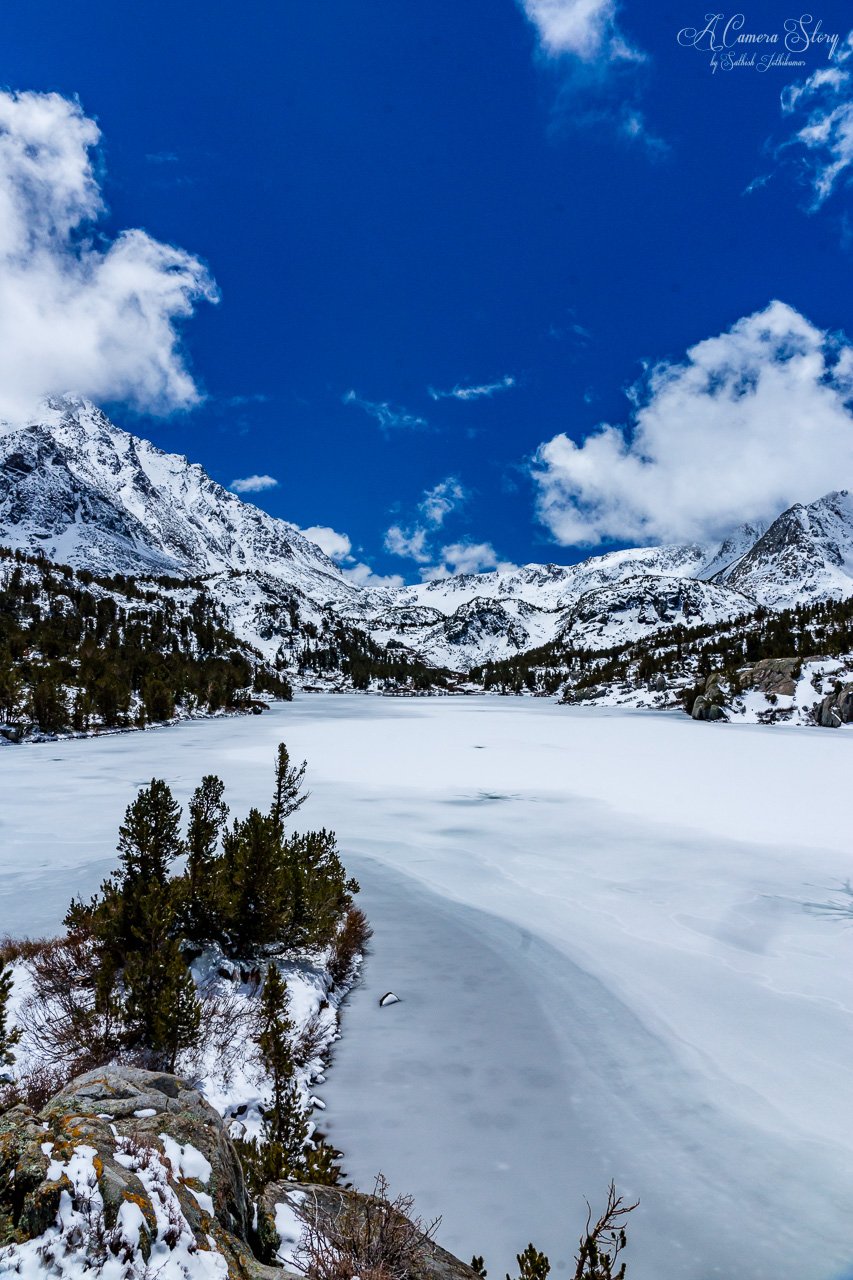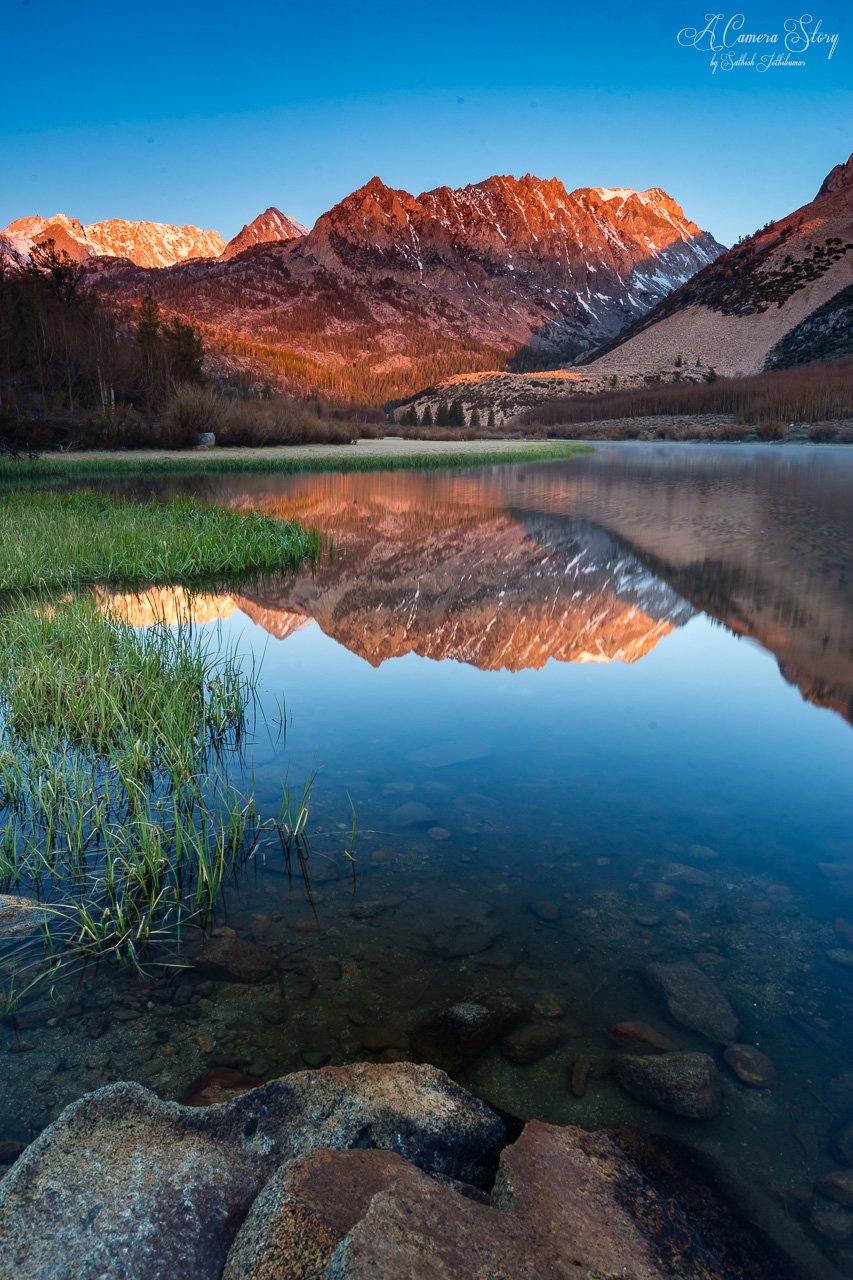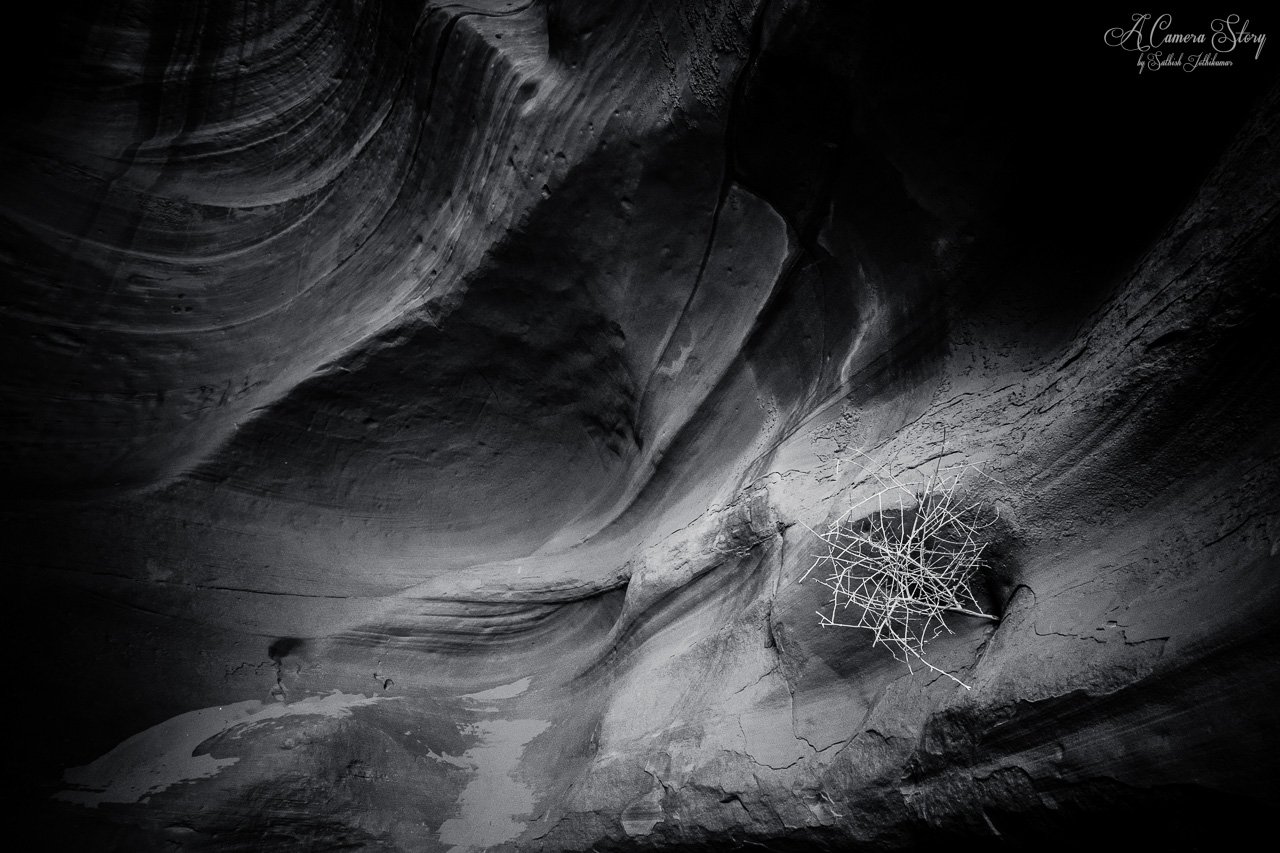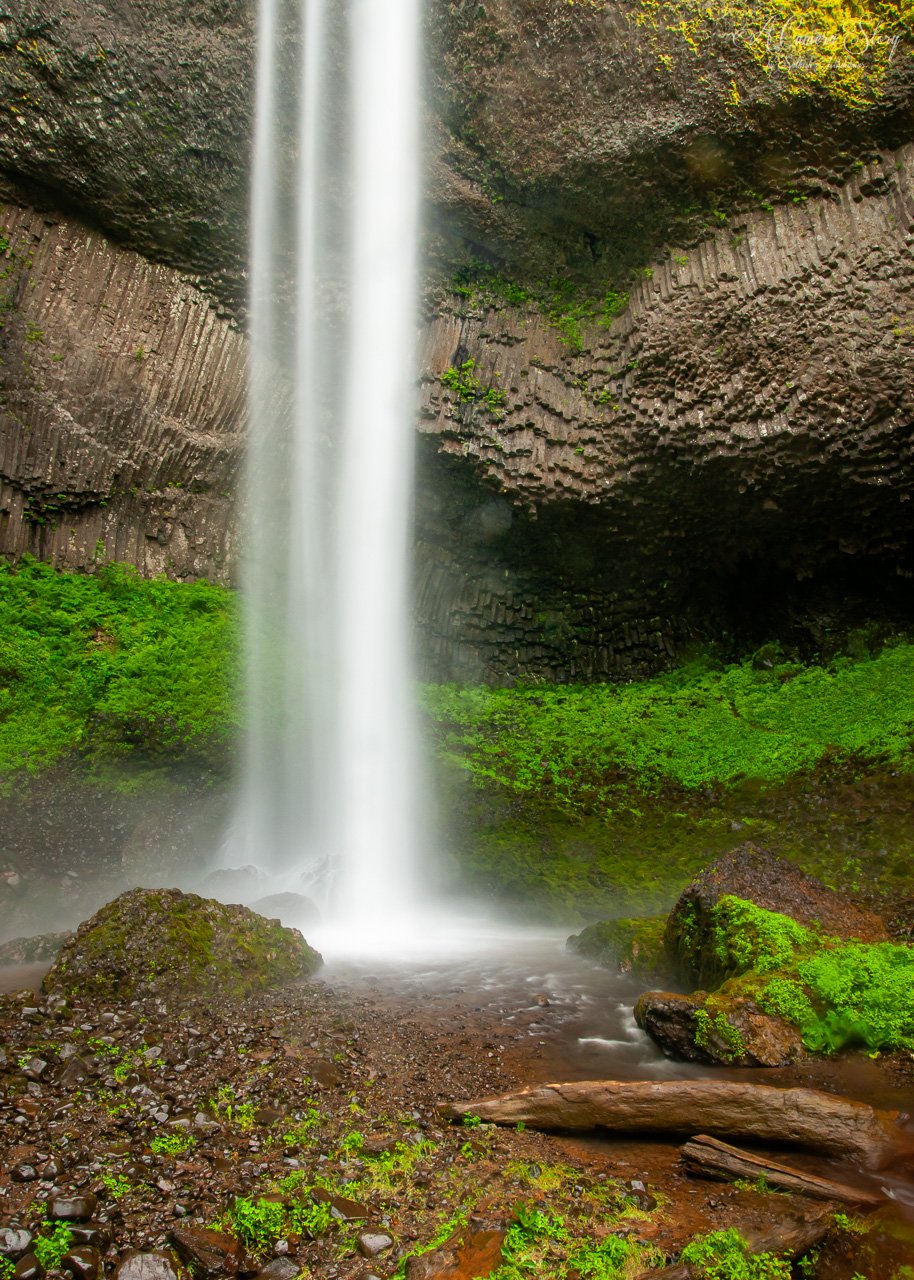I distinctly remember where I was when I heard about the May 11 G4 geomagnetic storm that would go on to create auroral displays in nearly all the states in the US. It was a slow-moving storm, and that gave enough time to evaluate locations to catch the aurora. This G4 storm earlier this month came with much less warning and lead-time. This fast moving storm would impact earth in just 24 hrs after it was detected. Were I in the US at that time, I would have struggled to find the right location to shoot it, but I happened to be in Iceland at that time. And while October usually results in changing weather patterns, I happened to be just an hour away from locations with 360 views, fairly calm conditions and very little light pollution.
The intensity of the storm was such that, even with my eyes blinded by headlights, the deep red glow was visible as clear as day as the storm was starting to build up. I pulled over, anticipating a sub-storm that would blow up the sky. And it did. As the intensity of the storm peaked, beams of light stretched from the coronal center all the way to the peaks in the horizon. It was as though the curtains of the sky had parted, and brilliant multi-colored light hiding behind the jeweled night sky filtered from the heavens.
The storm would continue for many more hours of that long night, with periods of quiet interlude between sudden showers of light. Nearly a decade since my first aurora, I couldn't believe that I would get to witness such an incredible spectacle so many more times. It was a night I wouldn't forget for a long time.
Kalfafellsstadur
Iceland
Greens of the Palouse
Its that time of the year again when the Palouse gets a glow-up. Brown rolling hills after the winter slowly transform to a resplendent green, both from the winter and spring crops. Colorful barns and grain silos dot the undulating landscape, interrupting the flowing fields of wheat, soy and canola. Yellow crop dusters take to the air to fly sweeping loops over this wavy landscape, spraying fertilizers and pesticides. While it is no organic farming, it certainly is a productive corner of the state.
And photogenic too. The few weeks surrounding this time offer optimal conditions to capture the pastoral landscapes from the high vistas and from the dirt roads that wind through the landscape. Old renovated farmsteads and beautifully restored red barns offer subjects for the detail seekers too.
Here are a few showing the view from up above.
Palouse
WA USA
Rays of Shadow
Watching the sun rise from the summit of a volcano was an tranquil affair, interrupted only by the tumultuous shockwave from a nearby eruption thundering through the air. As the light from the eastern horizon slowly gained intensity, features and undulations slowly became more visible in the haze. Roads and farms formed intricate patterns in the valley that only started to come into light.
As the deep reds slowly turned orange and yellow in the east, the western horizon was still dark under the shadow of earth itself. The moon was the only anchor point steady in the sky as the Belt of Venus slowly arose. What I had not expected to see was the shadow of the volcano itself projected onto a neat triangular point into the west. Surprisingly, this shadow, and the accompany rays of darkness only became visible after the sun rose. I admired the distance to which this shadow was projected, and how long it actually lasted.
This image portrays the summit of the volcano at sunrise.
Volcan Acatenango
Guatemala
Light of the night
The mother of all solar storms slammed the planet on May 9th. I even briefly observed the Kp scale going down to an unheard level of Kp9. The strength of the storm was 4x of the typical that I had witness in the PNW in the past. And it wasn't just one event, it was a train of half a dozen storms that impinged the planet in that timeframe. And during the height of these impacts, the auroral displays were observed as far south as Mexico, Austria and India, and as far north as Australia.
The internet has been flooded with plenty of images of this event over the past few days. Here is my contribution to this, an example of how the faint glow in the sky was really a dazzling spectrum of colors that arced all over.
North Cascades National Park
WA USA
Rainbow skies
I am still on a high from Friday night.
I had an inkling of how auroras appear out in the PNW: a few pillars of hazy light show up on the northern horizon, lasting a few seconds before disappearing, with the entire show lasting an hour at most.
But last nights G4 storm was something else: a once in 20-year storm that hits intensity levels enough to bring the aurora down to the mid latitudes. And so while we were watching the northern front, the display of lights happened overhead instead. It was strong enough to bring the entire rainbow of colors from exciting Nitrogen (pink), Hydrogen, Helium (blue and violet) and high altitude Oxygen (red).
This Mother's day spectacle is something that I will not forget for a while. It rivaled the display I had seen many years ago in Iceland. Will there be more this year? That is a million dollar question
North Cascades National Park
WA USA
Hazy Horizons
The hazy sunrise slowly transformed the landscape down below me. Caverns and canyons in the shadows became brighter, while the long shadows over farmsteads and tractors became shorter. We floated above this dreamy landscape, blissfully unaware of the civilization down below waking up and doing their morning chores. Instead, we focused on the beautiful patterns etched by the landscape becoming more sharp with the rising sun.
Such was the magic of floating into the sunrise in Cappadocia, where the dreams down below and reality up above merge at the hazy horizon.
Cappadocia
Turkey
Sierra spring
It was remarkable how quickly weather could transition in the Sierra Nevada mountain range of California. A late spring storm coated the rugged terrain with a smooth coat of snow, transforming the dry desert climate to a beautiful winter wonderland. But it didn't take long for this to change. In just 24 hrs, it transformed to its summer sheen, and was not longer the snowscape that it was just a day earlier. These two images show how quickly the weather can vary in the mountains.
Eastern Sierras
CA USA
Stills in the slot canyon
In the heart of desert sandstone lay slot canyons carved by water as it courses down after sudden squalls. The sinuous walls of the canyon, etched by eons of wind and water, reveal intricate layers, like ancient manuscripts waiting to be deciphered. Wandering the multitude of canyons in Navajo Nation was a perfect opportunity to explore the delicate beauty hidden within rugged depths. A black and white treatment for these images helps focus on the patterns and details, rather than the muted colors that the canyon originally presented.
Navajo Nation
AZ USA
Cascades in the Gorge
Watching the delicate dance of water as it winds its way down moss-clad rocks, or arc over a ledge in a beautiful waterfall, or spread into a million droplets of refreshing mist, is perhaps the surest sign of spring. The cool air was alive with the scent of damp earth and wildflowers, a fragrant reminder that life persists even in the hidden corner of the forest. It hearkens back to an era of unspoilt nature far away from civilization.
Here are a few scenes from the Columbia River Gorge, noted for its amazing variety of wildflowers which tumble down the steep slopes of the Gorge
Columbia River Gorge
OR USA
Sculptures of Sand
Sculpted by wind and time, the ancient sentinels of Monument Valley stand as testament to the rugged beauty of the desert southwest. Their stoic presence speaks of resilience, whispering tales of a time when dinosaurs roamed the land. The Navajo people revere these formations, considering them sacred places imbued with the spirits of their ancestors. Gazing upon these natural wonders, we are humbled by the enduring power of nature and the vastness of time.
Monument Valley Navajo Tribal Park
Navajo Nation USA

















